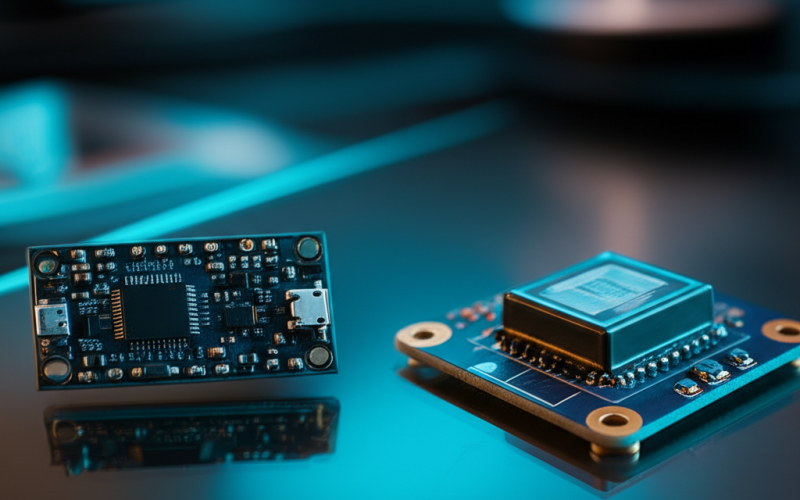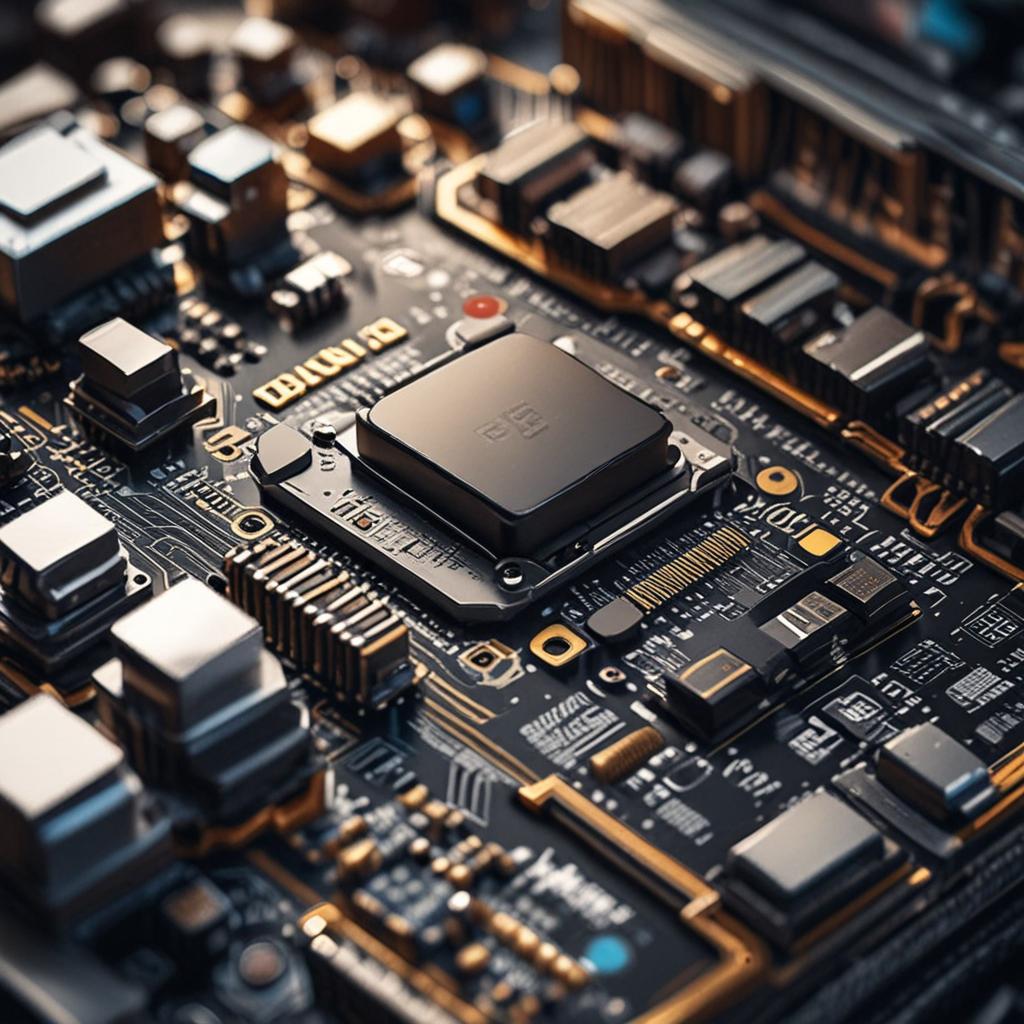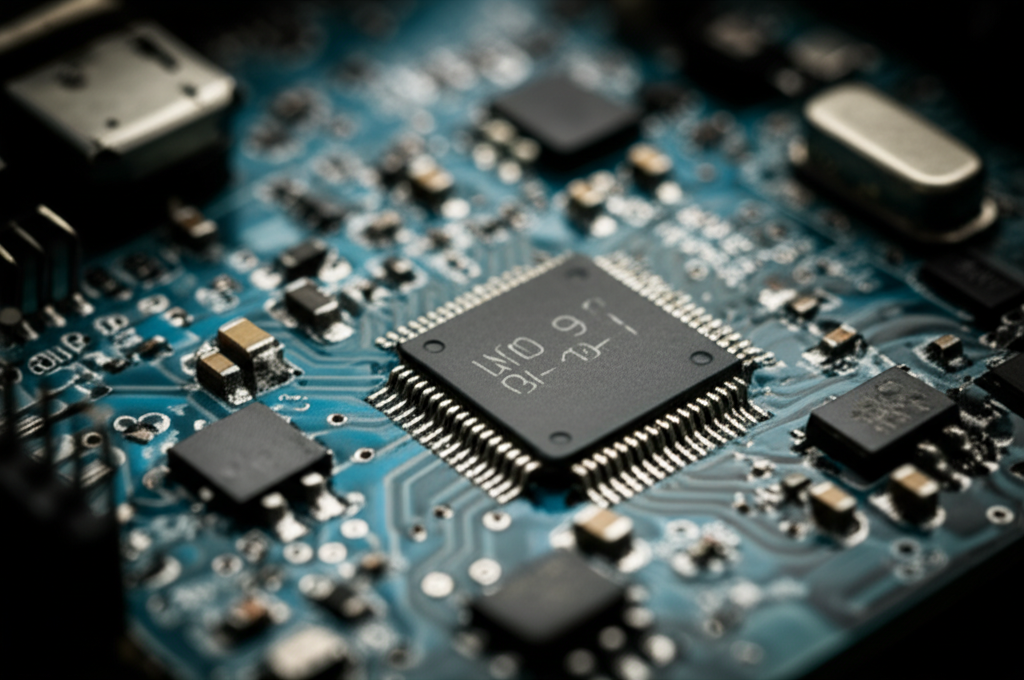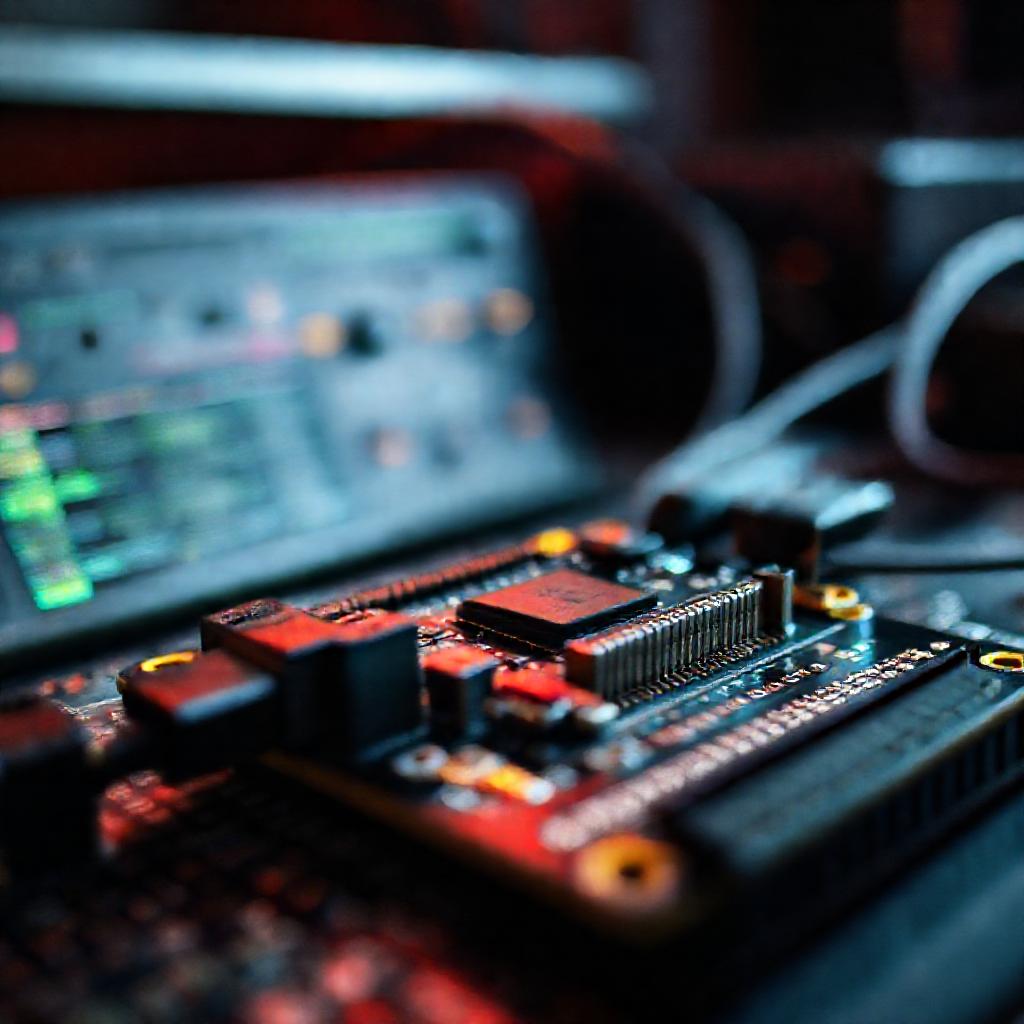Table of Contents Show
Introduction
Step-by-Step Process
Setup ESP32
Connect ESP32 to Wi-Fi and install required libraries
Configure AI Sensor
Connect and configure AI sensor with ESP32
Write ESP32 Code
Write code to read sensor data and send to Firebase
Set up Firebase
Create a new project and enable Realtime Database
Upload and Verify
Upload code to ESP32 and verify data in Firebase
Process infographic for How to Send Ai Sensor Data to Firebase Using Esp32
In the rapidly evolving world of Internet of Things (IoT), the integration of AI-powered sensors is transforming how we perceive and interact with our surroundings. These intelligent sensors, armed with onboard machine learning capabilities, can detect, classify, and react to complex stimuli, revolutionizing industries from smart homes to industrial automation. The ESP32 microcontroller, with its low cost, Wi-Fi connectivity, and processing power, has emerged as an ideal platform for edge AI and cloud communication. Firebase, with its real-time database, authentication, and ease of use, serves as a powerful backend choice for developers. This blog post will guide you through collecting data from AI sensors using ESP32 and securely sending it to Firebase, enabling you to build smarter, more responsive IoT systems.
Understanding the Components of the System
To successfully implement this project, it’s crucial to understand the key elements involved.
What Is an AI Sensor?
AI sensors are devices that combine traditional sensing capabilities with onboard machine learning for advanced processing. Unlike simple sensors that merely collect data, AI sensors can analyze, classify, or make predictions based on that data. Examples include:
- Google Coral USB Accelerator with a camera for object detection and classification.
- Edge Impulse-enabled microphones for sound classification or anomaly detection.
- ESP-EYE camera module for image processing tasks.
Edge AI, as this local processing is known, allows for efficient use of resources by sending only relevant results to the cloud.
Overview of the ESP32 Microcontroller
The ESP32 is a low-power, low-cost Wi-Fi and Bluetooth-enabled microcontroller that packs a punch for IoT and AI applications. With a dual-core processor, ample GPIO pins, and support for multiple communication protocols, it’s well-suited for handling AI inference and cloud communication. Its ability to run lightweight inference models and manage HTTP/S connections makes it an excellent choice for edge AI tasks.
Introduction to Firebase for IoT Applications
Firebase, Google’s mobile and web application development platform, offers several services that make it an attractive choice for IoT backends. Key services relevant to this project include:
- Realtime Database: A NoSQL cloud database that provides real-time synchronization, making it ideal for storing and displaying sensor data.
- Firestore: A scalable, document-based database that offers more advanced querying capabilities, although it requires more complex setup on ESP32.
- Authentication: Firebase Authentication enables secure user access and device authentication, ensuring data transmission security.
- Security Rules: Firebase security rules allow you to control access to your data, preventing unauthorized reads or writes.Setting Up the Development Environment
Before diving into the project, ensure you have the necessary tools and accounts set up.
Installing Arduino IDE and ESP32 Board Support
The Arduino IDE is a popular choice for programming ESP32. To install the ESP32 board support, follow these steps:
Open Arduino IDE, go to `File > Preferences`.
Add the following URL to the “Additional Boards Manager URLs” field: `https://dl.espressif.com/dl/packageesp32index.json`.
Go to `Tools > Board > Boards Manager`, search for “esp32”, and install the “esp32” package by “espressif systems”.
Restart Arduino IDE.
Alternatively, you can use Visual Studio Code with PlatformIO for a more feature-rich development experience.
Configuring Firebase Project and API Keys
To create a Firebase project and obtain your API keys, follow these steps:
Go to the [Firebase Console](https://console.firebase.google.com/).
Click on “Add project”, provide a name, and accept the terms.
Once your project is created, click on the project name, then “Project settings”.
Under “Your apps”, click on “</>” to add a new app.
Select “Web app”, provide a name, and register your app.
Note down the “Web app’s Firebase API key” and “Database URL” (under “Realtime Database”).
Enable “Realtime Database” or “Cloud Firestore”, and set up security rules (start with test mode for ease of use).
Optionally, create a service account for server-side use (e.g., Firebase Functions).
Installing Required Libraries
To facilitate communication with Firebase and AI sensors, you’ll need to install several libraries in Arduino IDE:
- `FirebaseESP32` by Mobizt: The primary library for Firebase communication with ESP32.
- Sensor-specific libraries (e.g., `ESP32-CAM`, `Adafruit MLX90640`).
- AI inference libraries (e.g., `TensorFlow Lite Micro`, Edge Impulse SDK).Install these libraries via the Library Manager in Arduino IDE (`Sketch > Include Library > Manage Libraries`).
Connecting and Configuring AI Sensors to ESP32
With your development environment set up, it’s time to connect your AI sensors to the ESP32 and prepare their output for Firebase.
Example 1 – ESP32-CAM with Motion Detection AI
For this example, connect an ESP32-CAM module (if not integrated) and use it with a pre-trained model for motion detection or people counting:
Connect VCC, GND, and CAM_PWDN pins between ESP32 and ESP32-CAM.
Load a pre-trained model (e.g., Edge Impulse or TensorFlow Lite) onto the ESP32.
In your Arduino sketch, include the `ESP32-CAM` library and configure the camera.
Run the inference model and output event counts or classification results.
Example 2 – Sound Classification Using On-Board ML
In this example, use an I2S microphone (e.g., INMP441) with the ESP32 to classify sounds:
Connect the INMP441 to the ESP32’s I2S pins (BCK, LCK, DIN, GND).
Load a sound classification model (e.g., TensorFlow Lite) onto the ESP32.
In your Arduino sketch, include the appropriate library (e.g., `INMP441`) and configure the microphone.
Run the inference model and extract the classified sound as JSON-ready data.
Preprocessing Sensor Output for Firebase
Before sending data to Firebase, ensure your AI inference results are in a structured format, such as JSON. Include relevant metadata like timestamps and device IDs. For example:
json
{
“timestamp”: “2025-04-05T12:30:45Z”,
“event”: “person_detected”,
“confidence”: 0.92
}Sending Data from ESP32 to Firebase
Now that you have your AI sensor data ready, it’s time to establish a connection to Firebase and upload the data.
Establishing Wi-Fi and Firebase Connection
To connect to Wi-Fi and initialize Firebase, use the following code snippets:
cpp
include
includedefine WIFISSID “yourSSID”
define WIFIPASSWORD “yourPASSWORD”
define FIREBASEHOST “yourFIREBASE_HOST”
define FIREBASEAUTH “yourFIREBASE_AUTH”
define APIKEY “yourAPI_KEY”void setup() {
WiFi.begin(WIFISSID, WIFIPASSWORD);
while (WiFi.status() != WL_CONNECTED) {
delay(1000);
Serial.println(“Connecting to WiFi…”);
}
Firebase.begin(FIREBASEHOST, FIREBASEAUTH, API_KEY);
Serial.println(“Connected to Firebase”);
}Writing Sensor Data to Firebase Realtime Database
With the connection established, you can now send sensor data to Firebase using the `Firebase.setJson()` or `Firebase.pushJson()` functions:
cpp
void loop() {
if (Firebase.ready() && (millis() – lastMillis > interval)) {
String path = “/sensordata/esp3201”;
String data = “{“timestamp”:”2025-04-05T12:30:45Z”,”event”:”person_detected”,”confidence”:0.92}”;
if (Firebase.setJson(fdb, path, data)) {
Serial.println(“Data sent to Firebase”);
lastMillis = millis();
} else {
Serial.println(“Failed to send data to Firebase”);
Serial.println(Firebase.error());
}
}
}Using Firestore (Alternative)
While Firestore offers more advanced querying capabilities, it requires OAuth2 authentication, which can be complex to implement on microcontrollers. If you still wish to use Firestore, consider using the Firebase REST API as a fallback or handling authentication on an intermediate server.
Securing Data Transmission and Device Authentication
To secure data transmission and prevent unauthorized access, implement Firebase security rules and consider using custom tokens or API key restrictions.
Implementing Firebase Security Rules
Write security rules to restrict write access to authenticated devices only. For example:
json
{
“rules”: {
“.read”: true,
“.write”: “auth != null && auth.token.deviceid === data.child(‘deviceid’).val()”
}
}Using Custom Tokens or API Key Restrictions
While storing API keys on the ESP32 is not recommended for production use, it’s acceptable for prototyping. Consider using short-lived tokens via an intermediate server or restricting API keys by IP address or referrer for better security.
Visualizing and Using AI Sensor Data in Real Time
With your data now securely stored in Firebase, you can use it to build real-time applications and gain valuable insights.
Building a Web Dashboard with Firebase
Use the Firebase Web SDK to read data in real time and display it on a web dashboard:
Create a new project on [Firebase Console](https://console.firebase.google.com/).
Enable Realtime Database or Firestore.
Add the Firebase SDK to your web project and initialize it with your project configuration.
Use the SDK to read data from the Realtime Database or Firestore and display it on your web page.
Example: Display live feed of detected events from multiple ESP32 devices.
Integrating with Notifications (Firebase Cloud Messaging)
Trigger alerts when specific AI events occur by combining Firebase Cloud Messaging (FCM) with your web dashboard:
Set up FCM for your web project and register service workers.
When a specific AI event occurs, send a push notification from your web dashboard using the FCM SDK.
Example: Send a push notification when “person_detected” event occurs at the front door.
Troubleshooting Common Issues
Encountering issues during setup? Here are some common problems and solutions.
Connection Failures to Firebase
- Verify your Wi-Fi credentials and ensure there are no firewall or blocked port issues.
- Double-check the Firebase database URL and API key format.Data Not Updating in Real Time
- Ensure you’re using the correct Firebase path and that your internet connection is stable.
- Check if ESP32 sleep modes are interfering with data uploads.AI Inference Performance on ESP32
- Optimize your model size by quantizing TensorFlow Lite models or using Edge Impulse’s model compression features.
- Use ESP32’s PSRAM for processing larger models (e.g., ESP32-WROVER).Conclusion – Building Smarter IoT Systems with AI and Firebase
By following this guide, you’ve successfully integrated AI sensors with the ESP32 and sent the collected data to Firebase. This workflow enables you to create smarter IoT systems, with real-time data processing and actionable insights. Whether you’re building a home automation system, industrial monitoring solution, or smart security application, the combination of AI sensors, ESP32, and Firebase offers a powerful and scalable platform. Explore different sensors and Firebase features to unlock the full potential of your IoT projects.
Frequently Asked Questions (FAQ)
Q: Can I use Firebase Firestore instead of Realtime Database with ESP32?
A: Yes, but it requires OAuth2 authentication, which is complex to implement on microcontrollers. Realtime Database with REST API is simpler, but Firestore offers more advanced querying capabilities. Libraries like `FirebaseESP32` support both, but Firestore setup is more involved.
Q: Is it safe to store Firebase API keys on the ESP32?
A: Not entirely. Keys can be extracted if the device is compromised. Use restricted API keys (by IP or referrer) and avoid using in production without additional security layers.
Q: What AI sensors work best with ESP32?
A: ESP32-CAM for vision, INMP441 + PDM/TFLite for audio, and sensors integrated with Edge Impulse. Ensure sensor output is digital and compatible with ESP32’s I2C, I2S, or SPI.
Q: How often can ESP32 send data to Firebase?
A: Depends on Wi-Fi stability and Firebase limits. Realtime Database allows frequent updates (multiple per second), but conserve power and bandwidth. Use batch uploads or event-triggered sending.
Q: Can multiple ESP32 devices send data to the same Firebase project?
A: Yes. Use unique paths (e.g., `/data/device01`, `/data/device02`) or include device ID in JSON. Manage access via security rules.
That’s it! You now have a comprehensive understanding of how to send AI sensor data from ESP32 to Firebase, enabling you to build smarter, more responsive IoT systems. Happy hacking!






